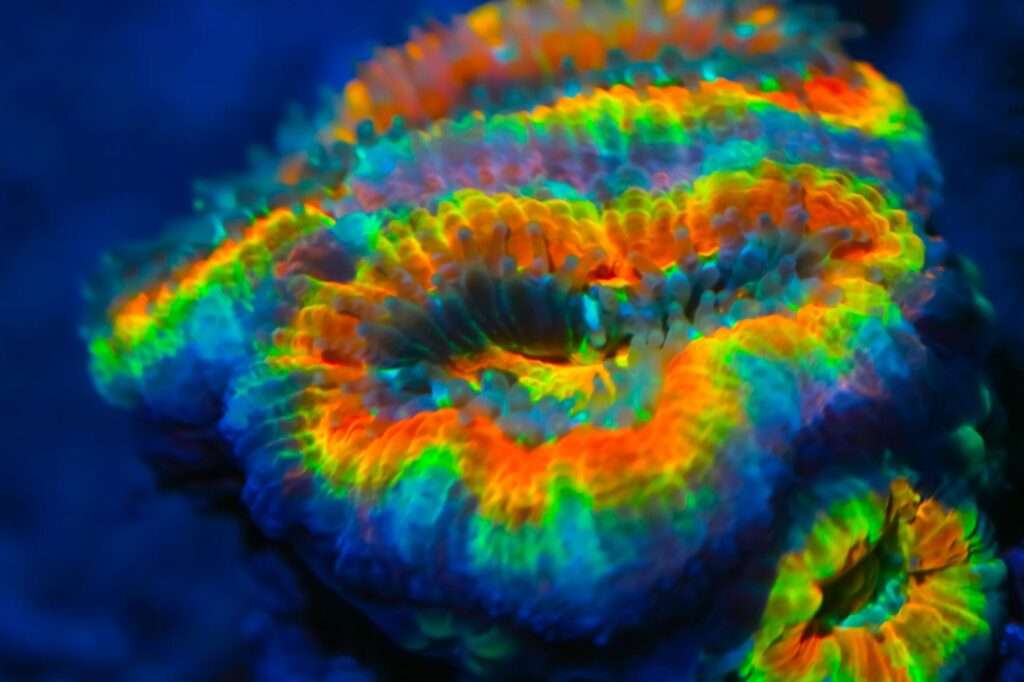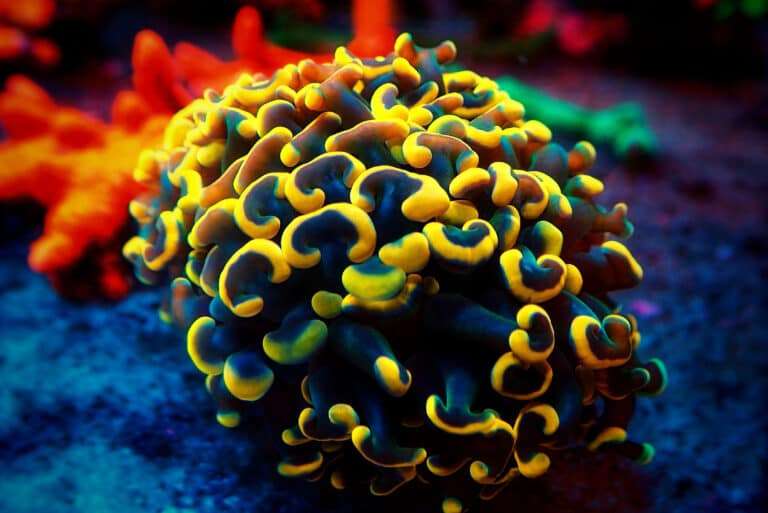
Coral Octobubble the aquarium trade frequently carries Plerogyra flexuosa, sometimes known as the Pearl Coral. The Plerogyra genus is often known as “bladder” or “grape” corals. They create flat, round colony clusters in the wild that resemble grape clusters. They also come in branching variations. Their so-called “grapes” are actually water-filled vesicles (bubbles) that change size in response to light intensity.
It was once believed that the Octobubble was a variation of the Bubble Coral, however it has now been discovered that it is a distinct species all on its own.
Habitat
The Great Barrier Reef, the Coral Sea, and the Ningaloo Reef are all along Australia’s northern coast as they move on in an easterly direction. From there, they travel east and can be found all the way to Samoa in New Caledonia.
Their habitat bends back to the north-west from Samoa to the Ryukyu Islands, Guam, and the Marshall Islands. Once again moving westward, they are found around Taiwan, Vietnam, the Philippines, Indonesia, and lastly the Maldives, where they complete their entire circle and return to the Red Sea, where they began. The Plerogyra genus lives in caves, crevices, and under overhangs in areas of calm water circulation on lower reef slopes. They don’t seem to really favour any particular light. They can be found in shallow, brighter waters or low-light locations with virtually complete shade, but all of these habitats have murky water.
Morphology
Large water-filled “bubbles” are produced by the Octobubble Coral P. flexuosa and the Bubble Coral P. sinuosa, which both live in a single colony. This is an instantly identifiable display. The word “octobubble” refers to the “nippled” tips of the bubbles of the Octobubble Coral P. flexuosa. The Bubble Branching Coral P. simplex resembles P. sinuosa in appearance, but P. sinuosa lacks separate branches. These little clusters are separated from one another within the colony by a significant amount of space, barely touching one another. P. discus has a similar flower-like appearance to the Fox Coral Nemenzophyllia turbida, but each puffy vesicle is attached to a different branch.
In Captivity

- Feeding
As planktivores, Plerogyra corals have evolved a variety of feeding techniques. Many of its nutrients are obtained through a symbiotic interaction with a sea algae called zooxanthellae. They can also take in dissolved organic substances and planktonic creatures as well as food particles from the water column. Try to avoid giving the animal large bits of food because doing so makes it difficult for them to digest the food and frequently causes them to regurgitate late at night. When this occurs, they are not receiving any benefit from the feeding, which may eventually cause them to starve to death.
- Social Interactions and Compatibility
Plerogyra corals should be kept separate from all other corals since they might be aggressive if they come in contact with them. Since it releases sweeper tentacles at night, it must be at least 6″ away. Their sweeper tentacles have a potent sting that they may punch at both humans and other corals. The toxin that leather corals release will harm them. When there is a significant population of leather corals around, they have been known to perish (Sinularia). Hermit crabs irritate the flesh of the Plerogyra genus, which is why it dislikes them.
Table





